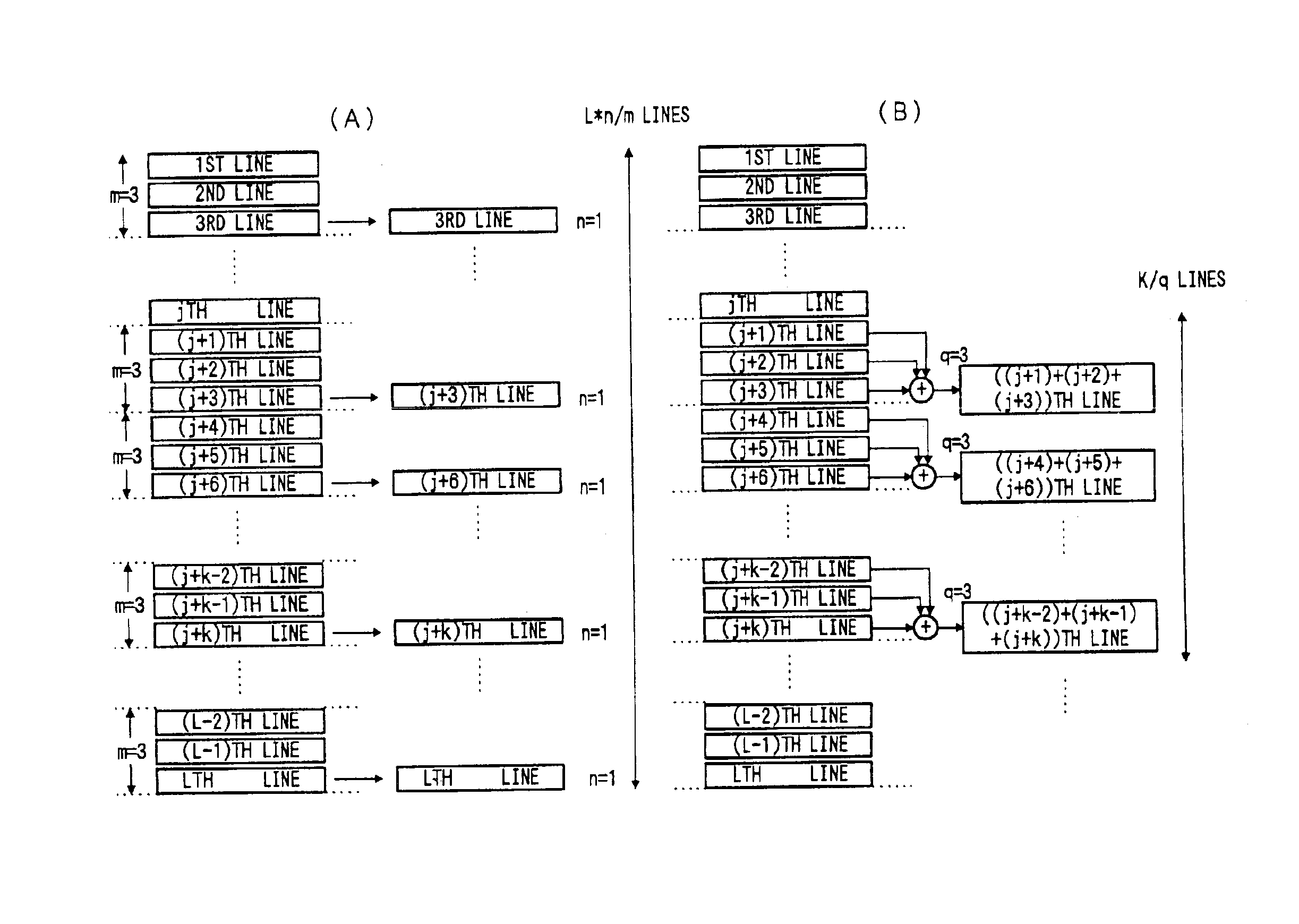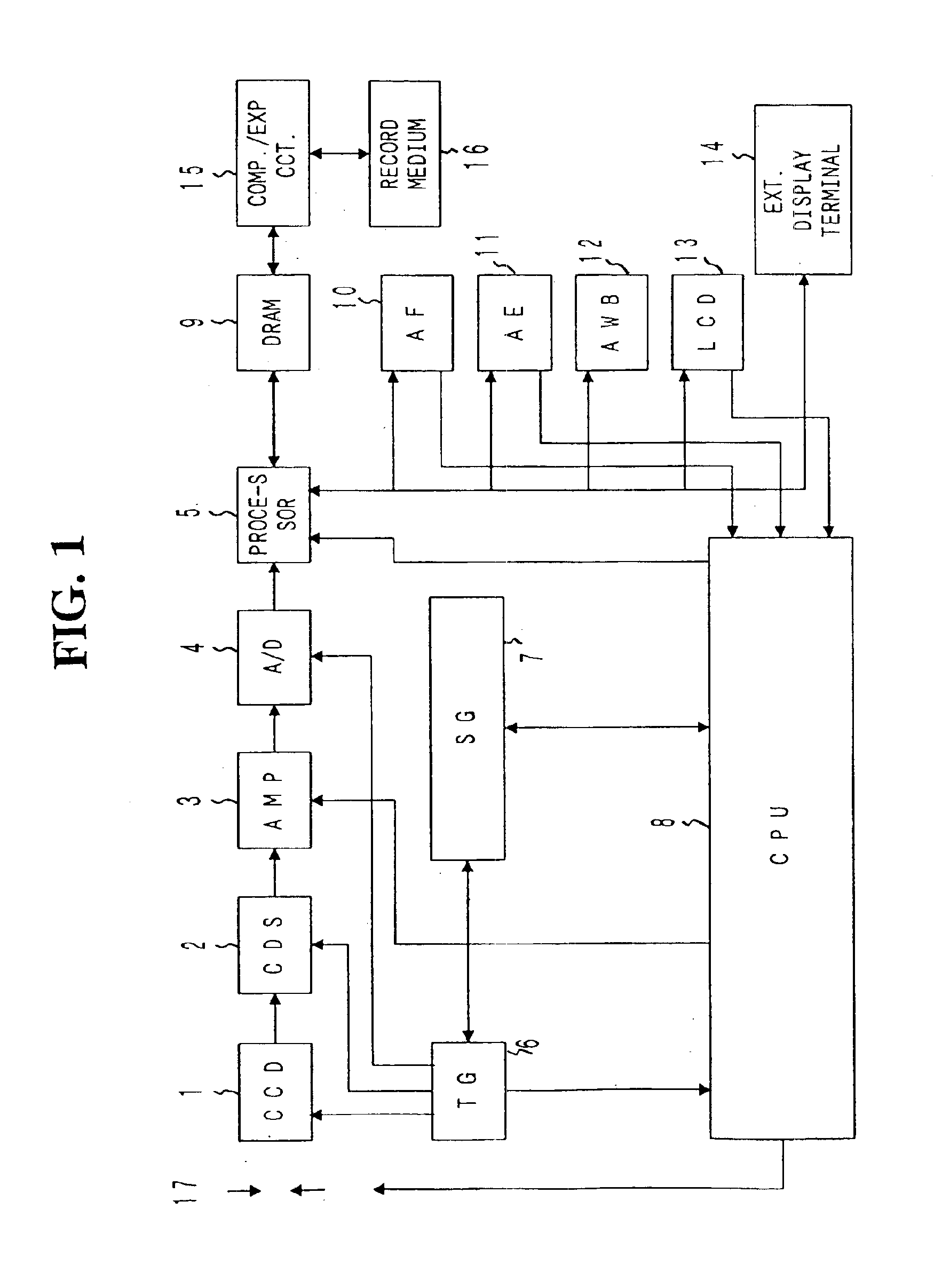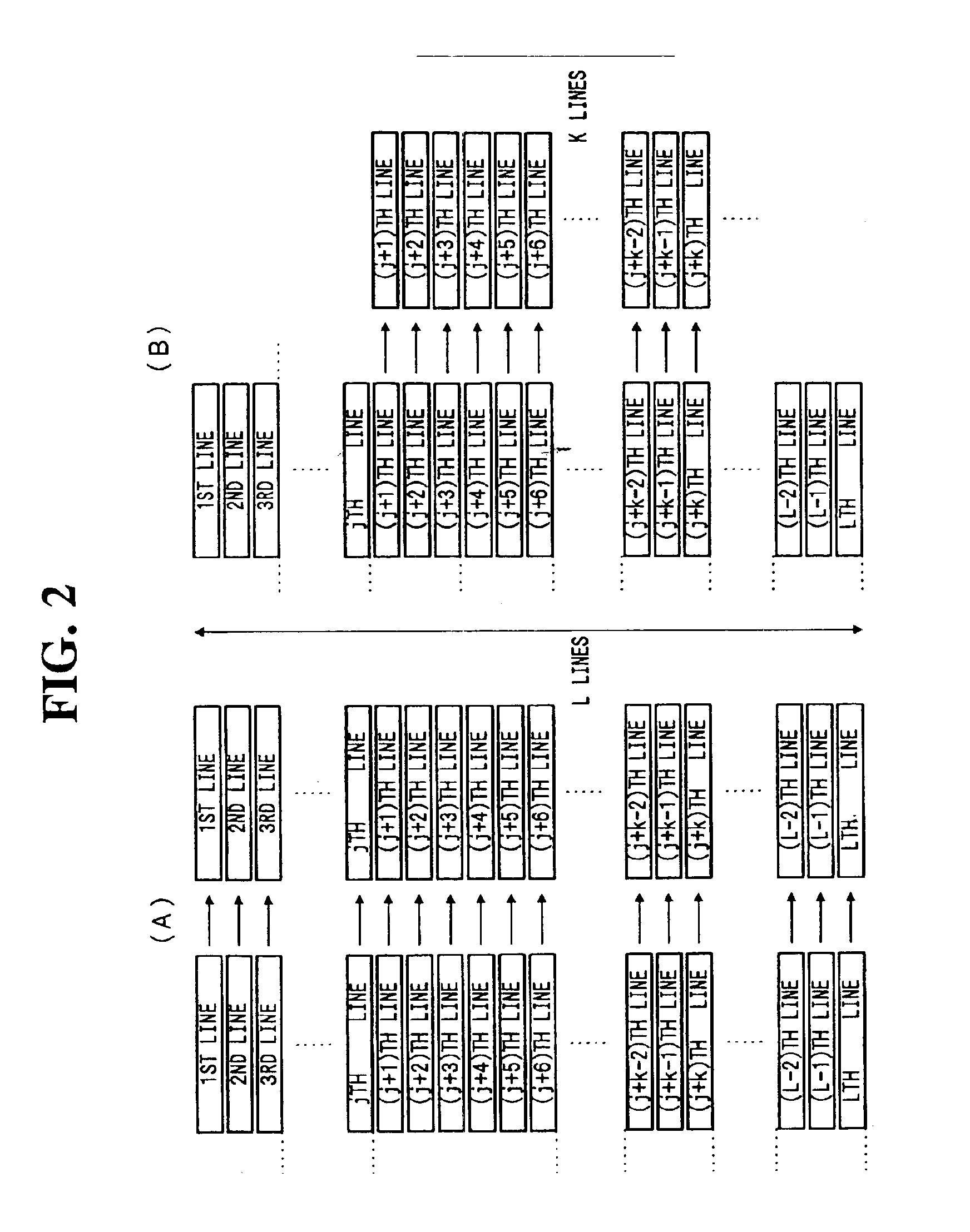Electronic imaging system
a technology of electronic imaging and image data, applied in the field of electronic imaging system, can solve the problems of inability to control dynamic image data, and achieve the effect of high frame rate outpu
- Summary
- Abstract
- Description
- Claims
- Application Information
AI Technical Summary
Benefits of technology
Problems solved by technology
Method used
Image
Examples
first embodiment
[0161]FIGS. 1 to 6 are views concerning the electronic imaging system according to the present invention. FIG. 1 is a block diagram showing the electronic imaging system.
[0162]The illustrated electronic imaging system has a primary purpose of taking and recording still pictures. As shown in FIG. 1, the system comprises a CCD 1 which is a two-dimensional array solid-state image sensor for converting subject image incident through lenses and a stop 17 to electric signal, a correlative double-sampling (CDS) circuit 2 for removing reset noise and the like from the output of the CCD 1, a gain control amplifier (AMP) 3 for controlling the gain of the output of the correlative double-sampling circuit 2, an analog-to-digital (A / D) converter 4 for converting output signal of the gain control amplifier 3 to a digital signal, a processor 5 for executing various processes on the digital signal as video signal, a timing generator (TG) 6 for providing a transfer pulse output for driving the CCD 1...
second embodiment
[0193]The main construction of this second embodiment of the electronic imaging system is the same as shown in FIG. 1.
[0194]In this embodiment, as shown in FIG. 7, pixel signals are read out from n (n≧1, n being an integer) lines among m (m≧3, m being an integer) vertically continuous lines in k (k≧6, k being an integer) vertically continuous lines.
[0195]More specifically, this embodiment has, in addition to the still picture recording mode for taking a high quality picture by sequential scan read of the whole CCD lines from the 1-st to the L-th line as shown in FIG. 2(A), a mode for reading out pixel signals of n lines among m lines as shown in FIG. 8(A), and a mode for reading out pixel signals of n lines among m lines in k vertically continuous lines as shown in FIG. 8(B), these modes being selectable.
[0196]In the examples shown in FIGS. 8(A) and 8(B), m=3, and n=1. Pixel signals of one line are thus obtained in three lines.
[0197]Thus, in the mode shown in FIG. 8(A), the frame ra...
third embodiment
[0222]The main construction of this third embodiment of the electronic imaging system is substantially the same as shown in FIG. 1.
[0223]As shown in FIG. 13, in this embodiment summed pixel signals of n (n≧2, n being an integer) lines among m (m≧3, m being an integer) lines in k (k≧6, k being an integer) continuous lines are read out. So far as one line among three lines is extracted, this embodiment is the same as the previous second embodiment. A difference resides in that data of one line that is extracted is obtained by adding together data of, for instance, two among three lines. The frame rate is the same as in the second embodiment.
[0224]More specifically, for reading out the image data from the CCD 1, the embodiment has, in addition to the still picture recording mode for taking a high quality picture by sequential scan read of the whole CCD lines from the 1-st to the L-th line as shown in FIG. 2(A), a mode of reading out pixel signal sums each of n lines among m lines as sh...
PUM
 Login to View More
Login to View More Abstract
Description
Claims
Application Information
 Login to View More
Login to View More - R&D
- Intellectual Property
- Life Sciences
- Materials
- Tech Scout
- Unparalleled Data Quality
- Higher Quality Content
- 60% Fewer Hallucinations
Browse by: Latest US Patents, China's latest patents, Technical Efficacy Thesaurus, Application Domain, Technology Topic, Popular Technical Reports.
© 2025 PatSnap. All rights reserved.Legal|Privacy policy|Modern Slavery Act Transparency Statement|Sitemap|About US| Contact US: help@patsnap.com



